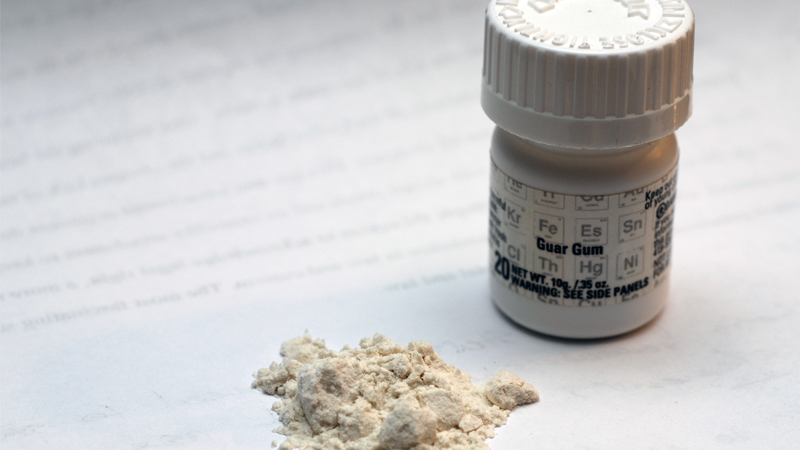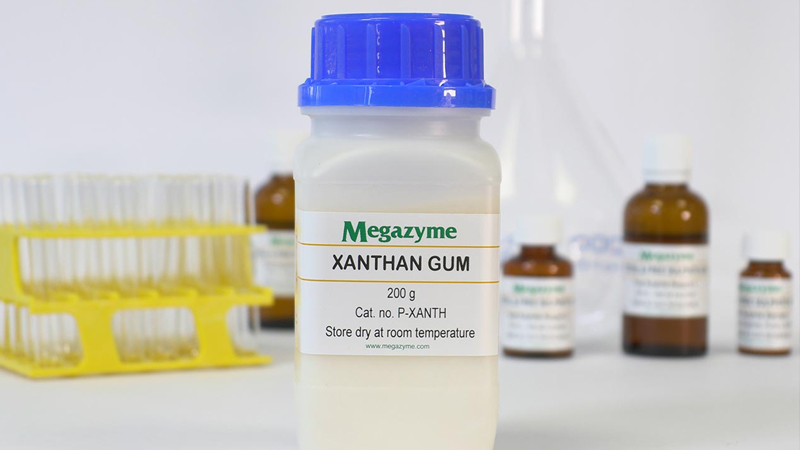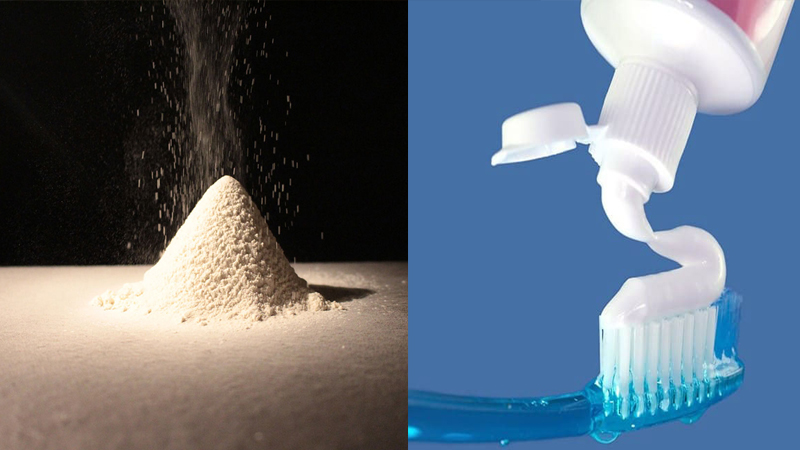If you’re a culinary enthusiast, you’ve likely encountered various ingredients and components that go into creating delicious dishes. But have you ever delved deeper into the important substances that make up those ingredients? Guar Gum and Xanthan Gum are two such examples. Let’s explore what Guar Gum is and how it differs from Xanthan Gum.
1 What is Guar Gum?
Guar Gum, or simply Guar, is a plant-based food ingredient. It is also known as Guara or Galactomannan, with the scientific name Cyamopsis tetragonolobus.
 Image of Guar Gum
Image of Guar Gum
Naturally, Guar Gum is extracted from the endosperm of guar beans. It appears as a white powder. The process involves dehulling the beans, grinding them into a fine powder, and then separating the guar gum. Chemically, it is composed of galactose and mannose sugars, which form a polysaccharide carbohydrate—Guar Gum.
 Guar Gum originates from Guar Beans
Guar Gum originates from Guar Beans
Guar Gum is used as a stabilizer, emulsifier, and thickening agent. Additionally, it finds applications in the food, cosmetic, and industrial sectors due to its ability to stabilize textures, add viscosity, and more.
Guar Gum is prevalent in countries like Pakistan, the United States, India, and various African nations.
2 What is Xanthan Gum?
Xanthan Gum is also a food ingredient, similar to Guar Gum. However, chemically, it is a polysaccharide and appears as an off-white, colorless, and tasteless substance.
 Xanthan Gum
Xanthan Gum
This gum was first discovered by American chemist Allene Rosalind Jeanes. Xanthan Gum is produced by the bacterium Xanthomonas campestris. It is created by fermenting glucose, sucrose, or lactose.
Xanthan Gum consists of glucose, mannose, and glucuronic acid. It serves as a rheology modifier, thickening agent, and stabilizer in food, cosmetics, pharmaceuticals, and more.
 Xanthan Gum prevents clumping in batter
Xanthan Gum prevents clumping in batter
Xanthan Gum is used to thicken and add viscosity to foods. It can also be combined with other natural gums to form gels that resist acidic ingredients. Additionally, this gum exhibits water-holding capacity and prevents clumping during mixing.
3 Applications of Guar Gum in Daily Life
Food Industry Applications
- Thickens cold foods like ice cream and whipped cream.
- Adds body and retains moisture in sauces and emulsions.
- Used in gluten-free baking and products.
- Found in condensed milk, yogurt, kefir, and liquid cheese products to thicken and maintain texture in creams and sherbets.
- Forms heat-stable gels and light foams.
- Acts as an emulsifier stabilizer.
- Improves yield, texture, and shelf life in baked goods.
 Guar Gum increases cake thickness
Guar Gum increases cake thickness
Applications in Textile and Other Industries
- Used in shampoos, conditioners, and body washes to thicken and stabilize.
- Serves as a waterproofing agent in the explosives industry.
- Acts as a thickening agent in toothpaste, lotions, and creams in the cosmetics industry.
- In pharmaceuticals, Guar Gum is a binder and serum reducer with positive effects on blood viscosity.
 Guar Gum creates a sticky texture in toothpaste
Guar Gum creates a sticky texture in toothpaste
4 Differences Between Guar Gum and Xanthan Gum
The differences between Guar Gum and Xanthan Gum can be categorized as follows:
E Number (EU Food Additive Code)
- Guar Gum: E412
- Xanthan Gum: E415
Chemical Nature
- Guar Gum is biochemically a polysaccharide containing galactose and mannose sugars.
- Xanthan Gum is a polysaccharide with the chemical formula C35H49O29, composed of glucose, mannose, and glucuronic acid.
 Guar Gum (left) and Xanthan Gum (right)
Guar Gum (left) and Xanthan Gum (right)
Origin
- Guar Gum is derived from the endosperm of guar seeds.
- Xanthan Gum is produced by the bacterium Xanthomonas campestris.
Production Process
- Guar Gum is produced from guar seeds through dehulling, grinding, and sieving to obtain the white powder.
- Xanthan Gum is created by fermenting glucose, sucrose, or lactose. The polysaccharide is then precipitated from the growth medium with isopropyl alcohol, dried, and ground into a fine powder. It becomes a gum when combined with a liquid medium.
Both Guar Gum and Xanthan Gum can cause allergies, with symptoms like redness, itching, and diarrhea. Guar Gum may cause reactions due to its bean origin, while Xanthan Gum can trigger allergies in those sensitive to corn, wheat, or dairy, as it is often derived from these sources. Therefore, it is essential to consider these potential allergens when consuming products containing these gums.
This article has provided basic information about Guar Gum and Xanthan Gum, enhancing your understanding of these substances.
Source: hellobacsi

































